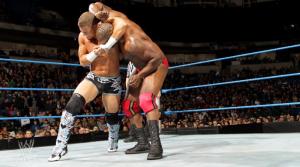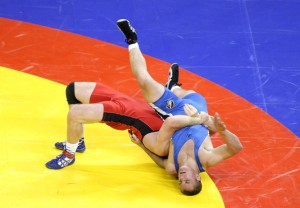The Classic Headlock Position
Now almost everyone has seen this position before whether it was in the school yard with a bully or in the backyard with some friends. An extremely common form of “attack” that untrained individuals find themselves using is this standing headlock. This hold can be daunting to someone who does not know how to escape from it but so easy to escape for one who does.
The Initial Contact
Because this is considering real attack situation, the attacker is not putting you in this headlock to give you a noogie. When there is malice intent it is always very important to protect your vulnerable areas as well as you can. From this position your face is the part that is most accessible to your opponent and most likely to be attacked.
Let us assume that the attacker grabs a hold of you with his left arm. To start to neutralize his striking your first priority is to protect your face with your own left arm. A first instinct is to use this arm to remove the attacker’s arm and free yourself but this is not all that likely to be effective and it will take a lot of strength to break the opponent’s hold.
More importantly, your other hand can be used to take control of the attacker’s striking hand. This is done by reaching it around the back of the opponent and grasping his wrist and pinning it to his hip. This is not only crucial to stopping the opponent’s strikes but also for performing the escape.
The Simplest Escape Ever
For as seemingly popular it is for one to automatically put an adversary in this headlock, the escape for it is very simple indeed. It requires only good body position and know how, there is really no strength factor in performing this escape. For as simple as this escape is, the famous Gracie BJJ family can teach you so much more about it.
Positioning
First and foremost you must get your body into the right position to effectively escape the headlock. Your grip on the opponent’s wrist is very important and should already be in place. Your other hand cups the inside of the thigh near the knee. Remember to keep your neck bulled as well to avoid this headlock from breaking your body positioning and compromising your strength.
During this whole process it is also very important to keep low and maintain a wide base so that the attacker cannot manhandle you easily. Now for the final positioning you need to be behind the attacker. Specifically the instep of your right foot should be placed right at the heel of the opponent.
Crumble to Escape
The next step and last step of this technique is to essentially crumble to the ground in such a way that releases you from the attacker’s grip. To do this you drop your own left knee to the ground and use your body weight to lower the opponent. Then you drag your opponent down with you as you fall off to your right side. As you roll on top of your opponent his grip is loosened and you can use your hand to free yourself from his grip.


